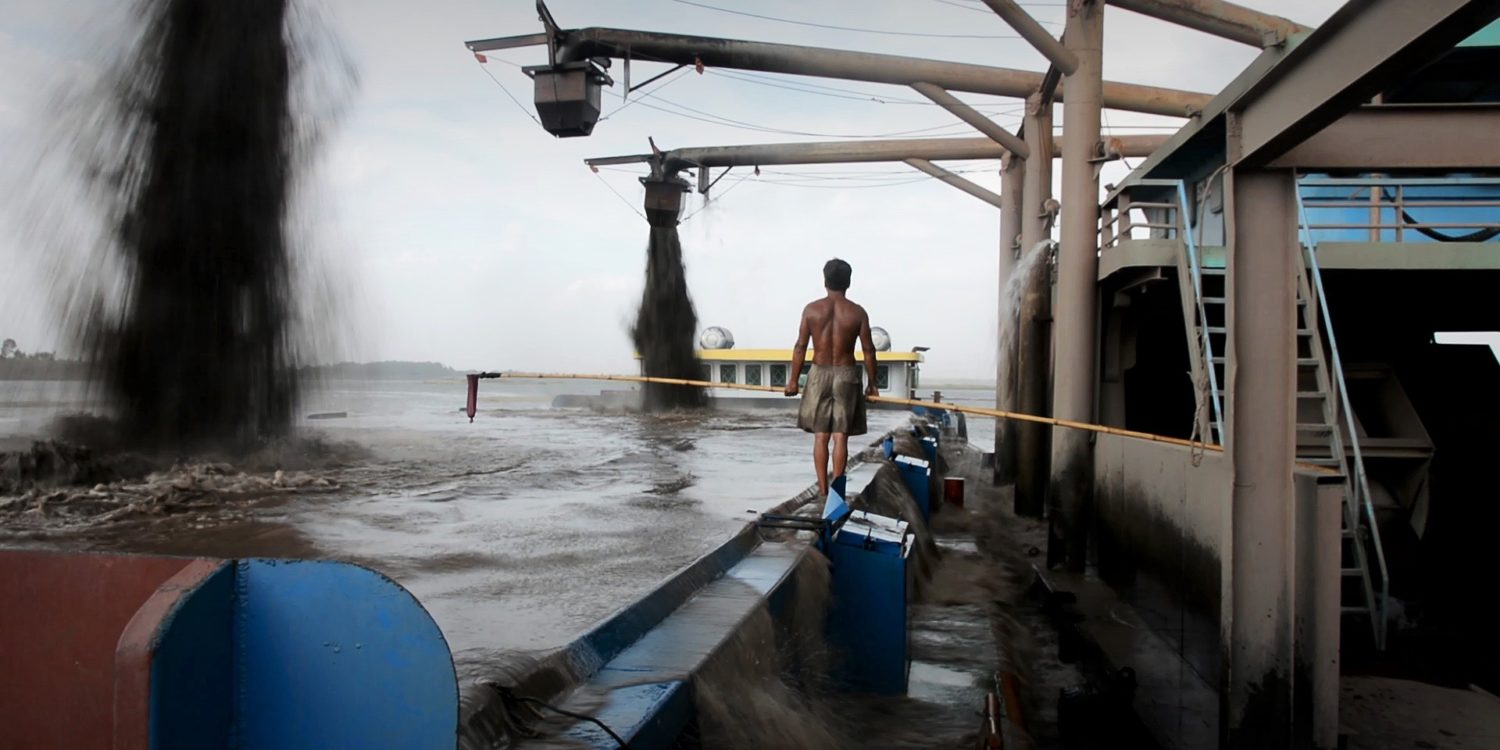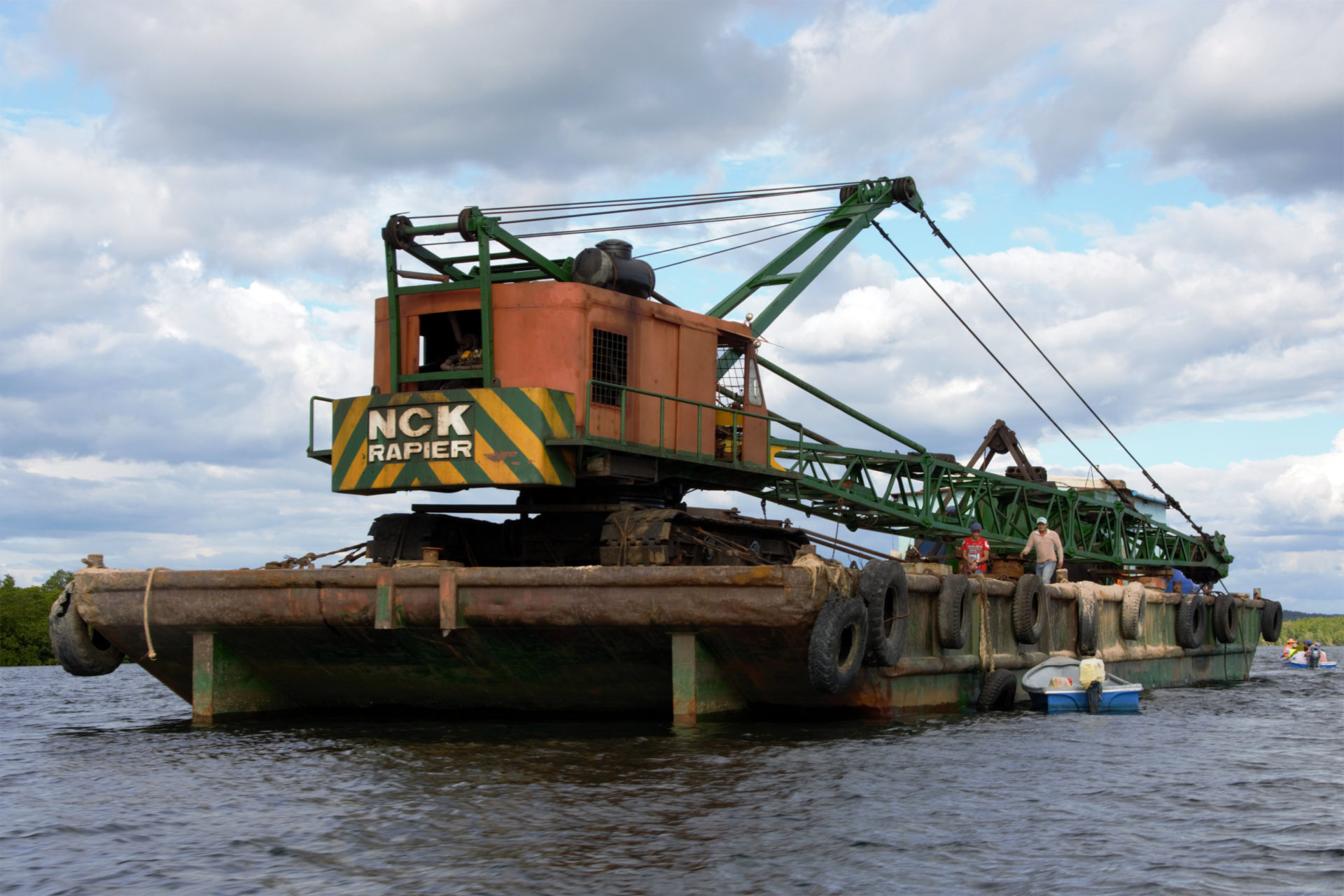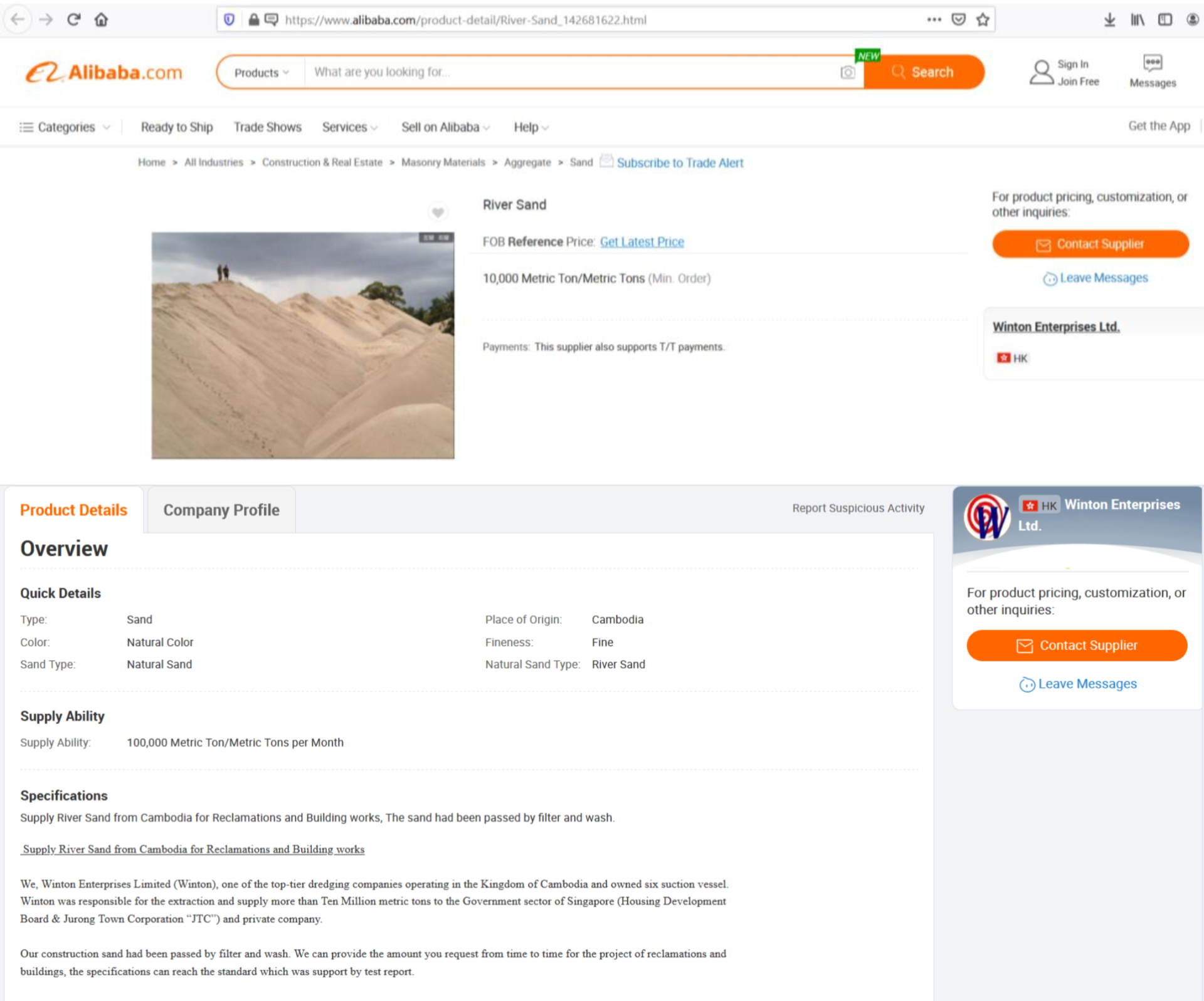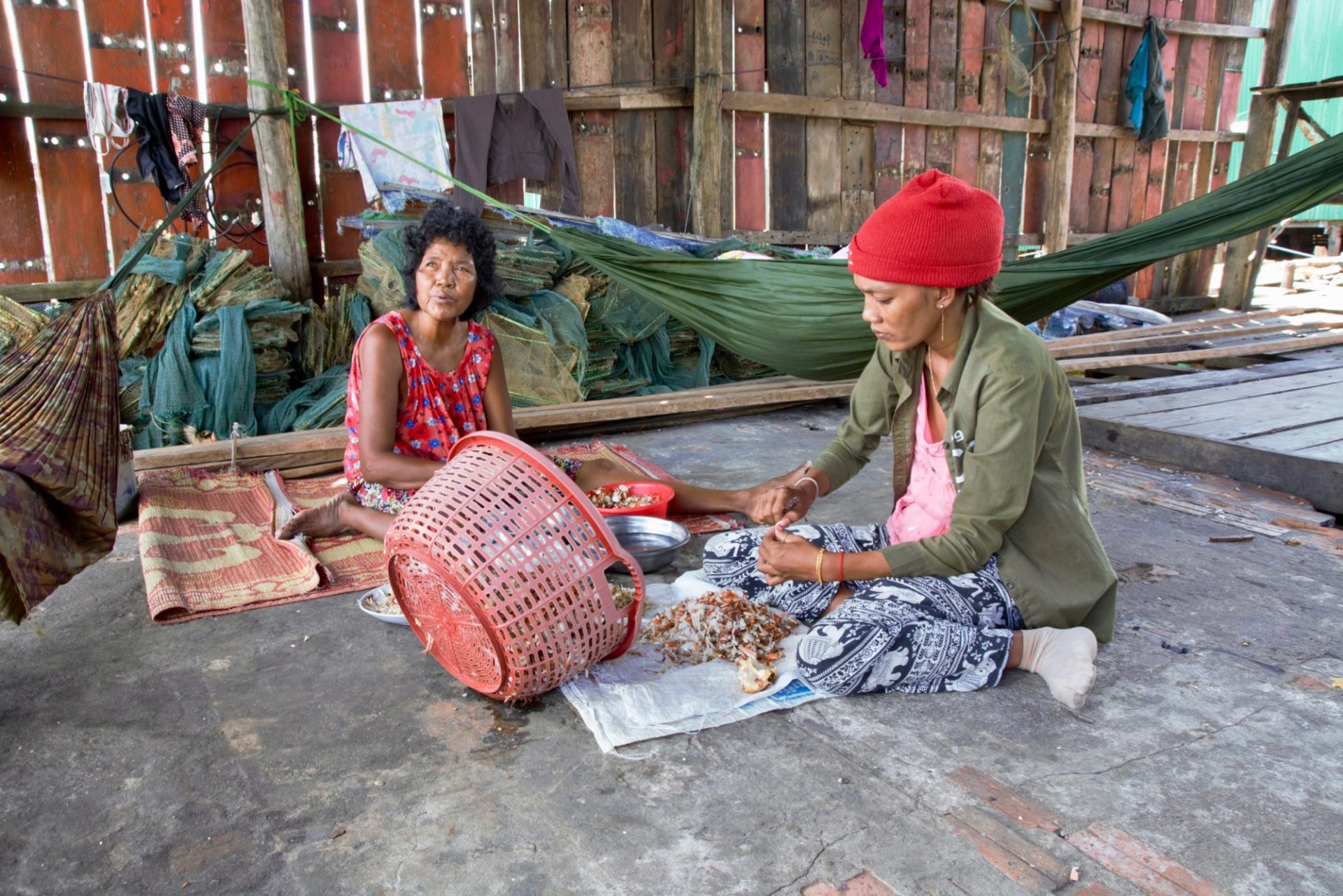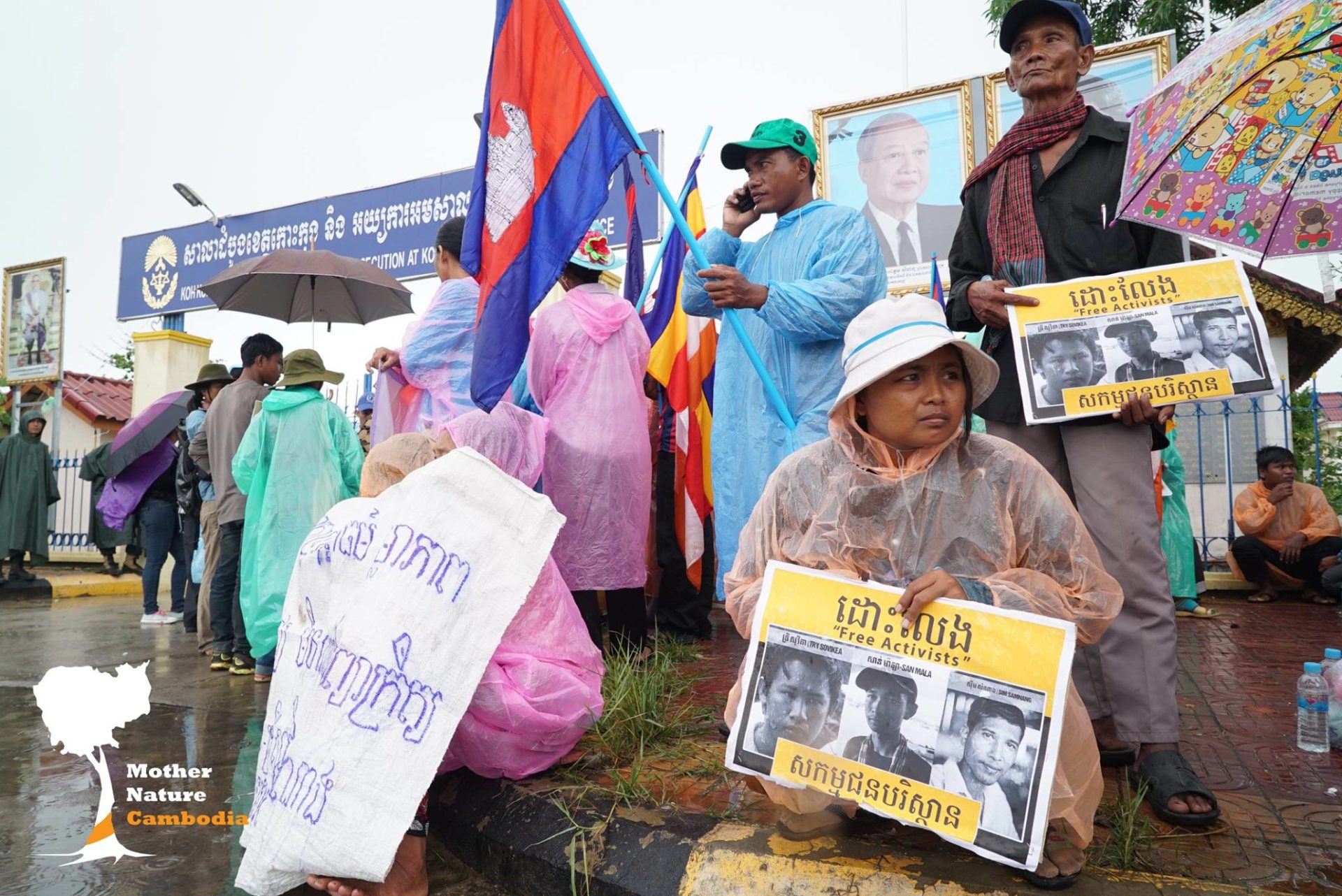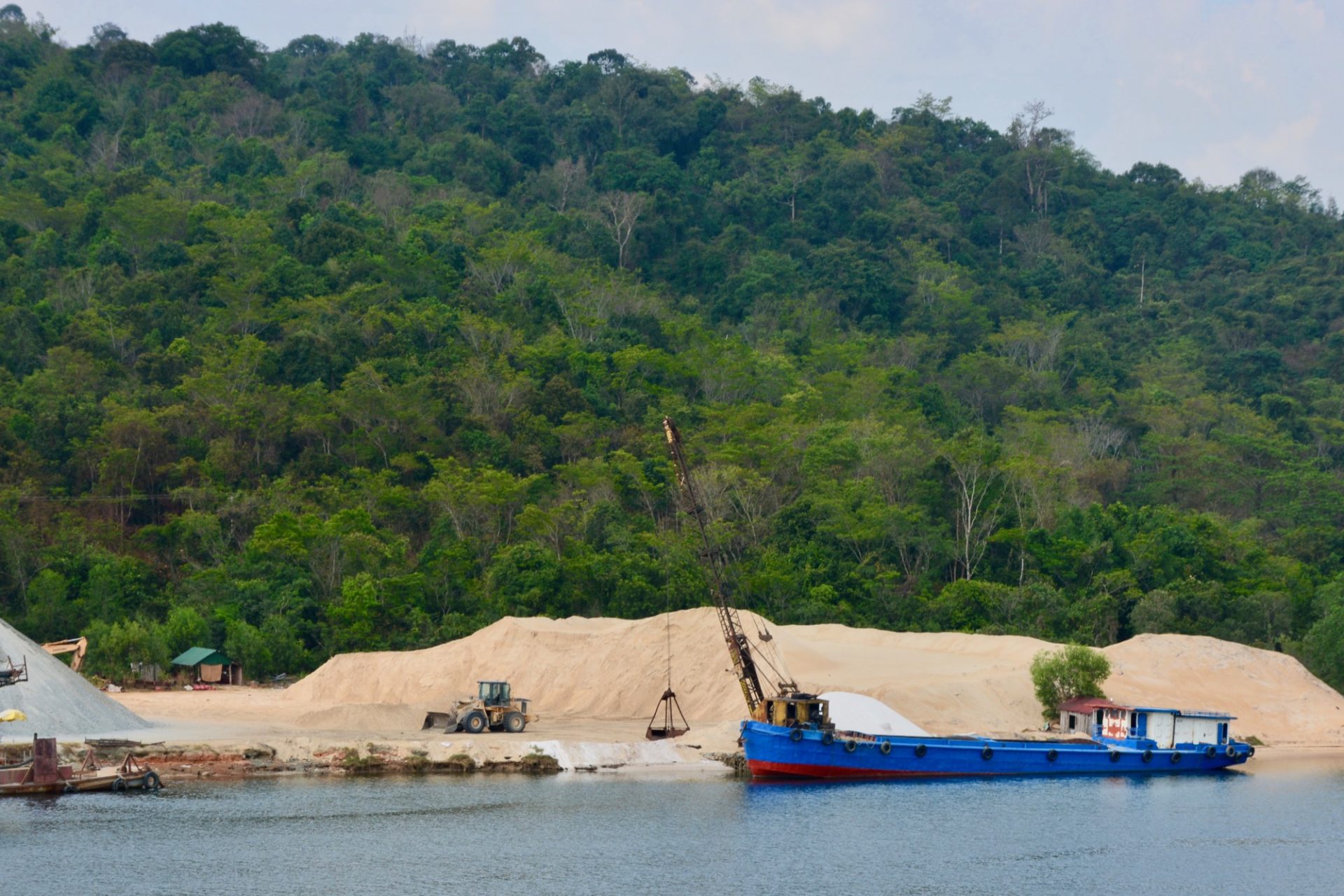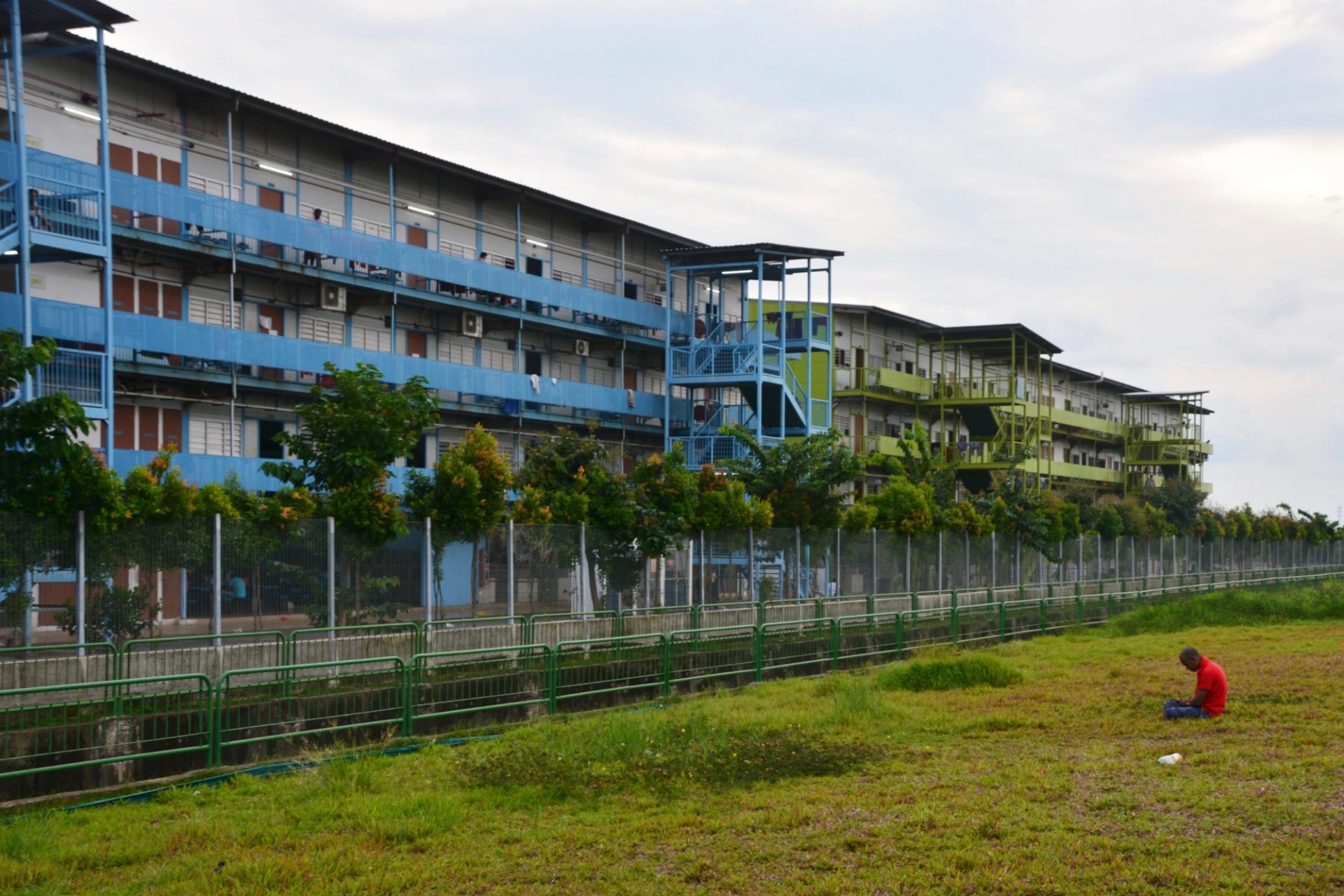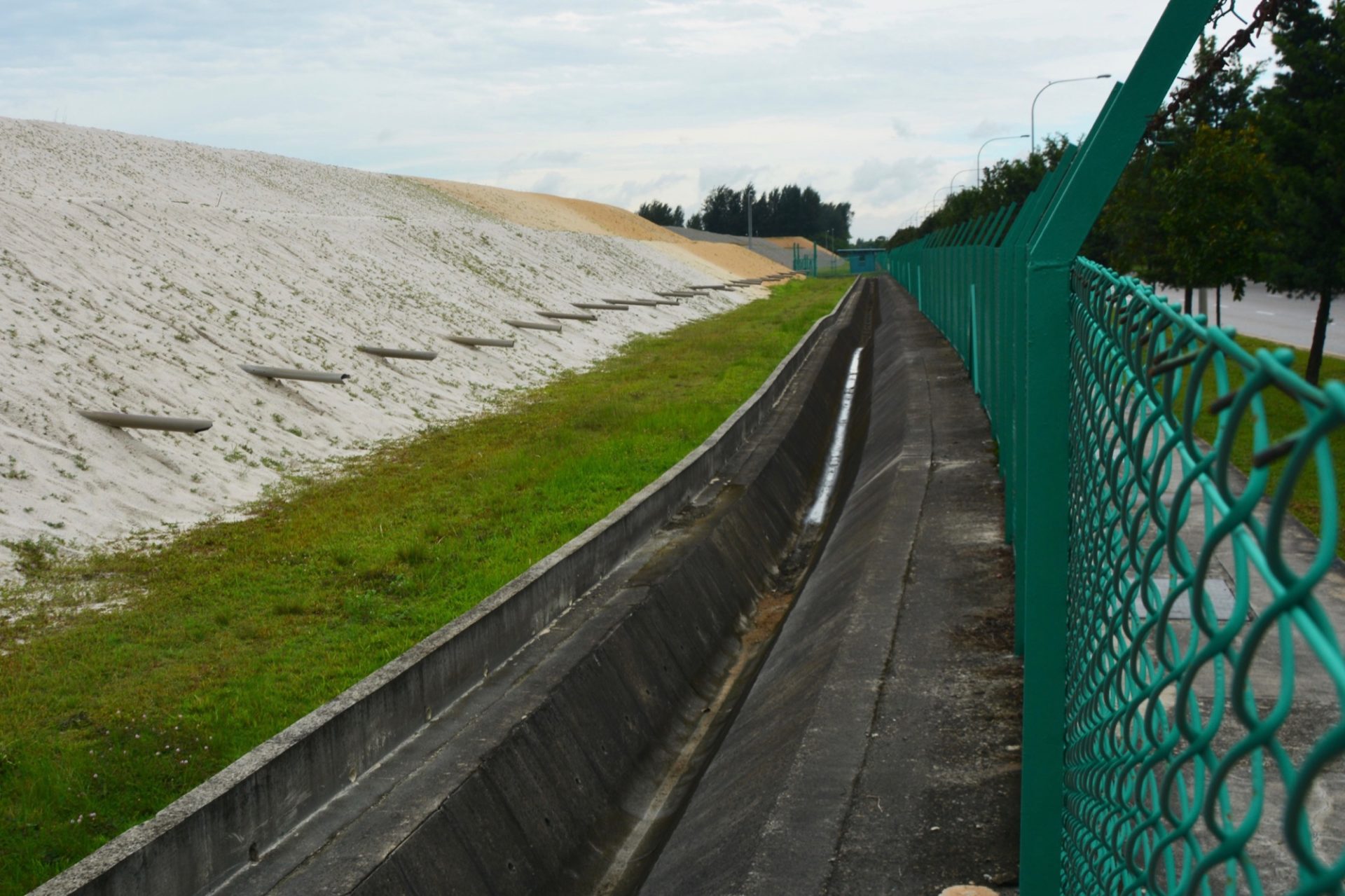This article is part of the FA special series Building Workers Unite
Singapore is a city-state renowned for its size, or lack thereof. In the preface of Lee Kuan Yew’s autobiography, the founding Prime Minister of Singapore begins with an overture to young Singaporeans, teaching them about the hardships of governing “a small country of 640km² [now 725km²] with no natural resources”. In later speeches, he also spoke of Singapore overcoming its “geographic and economic constraints”, as though these two factors were interdependent. Judging by its ranking as the most liveable and sustainable city in Asia (and fourth in the world), as well as the language of greening and sustainability that wreaths its urban policy, you’d be forgiven for thinking the country’s phenomenal and continuous expansion was achieved through ingenious governance and hard work, with little to no social or environmental impact. And yet, this seemingly limitless economic and physical growth — in which 25 per cent of the city-state has been reclaimed from the sea — draws from invisible and distinctly limited external sources. Like two sides of an hourglass, just as Singapore has grown, it has become increasingly dependent on labour and sand, extracted almost entirely from countries in the wider region.
The city-state and its citizens can ignore the essential importance of sand and labour to their city’s growth thanks to complex supply chains and networks of subcontracting that are deliberately obscured from view, all the better to ignore the consequences of this seemingly scentless urban growth model. Tracing the journey of these two essential ingredients is difficult, but it is also vitally important, since a proper picture of these ‘sandscapes’ exposes the fundamental problems with this model of urban growth.
Among the most prominent sand suppliers until 2017 was Cambodia, a post-conflict country dominated by a kleptocratic elite who have for the past three decades engaged in rampant resource extraction – from jade and timber, to land, and most recently sand. In their pursuit of this new resource, the Cambodian tycoons who held the licenses and ran the dredging and transportation companies made a fortune, while workers moved from one extraction site to another, leaving behind degraded ecologies and ruined livelihoods.
In the decade between 2006 and 2016, Singapore was the number one global importer of sand five times. After exhausting its own foreshore sand in the early 1980s, this exceptional level of import has been accompanied by almost every country in Southeast Asia banning some form of sand exports to Singapore. This led to a crisis in 2006, when both Malaysia and Indonesia had closed their frontiers. The reclamation companies, being bound to deadlines, reached out far and wide in the search for new sources of sand.
They found a willing supplier in Cambodia, who became the prime partner for roughly a decade. At first, however, due to the country having never seen sand extraction on this scale before; a new market had to be produced overnight. The speed at which this supply chain was established is impressive: 2019 figures from UN Comtrade database show that dredging equipment imports grew from nothing in 2006 to 25.4 million USD in 2008. Koh Kong, an isolated and rural coastal province, became the hot-spot of dredging with hundreds of boats and transportation barges operating at the same time. A peripheral area inside Cambodia, Koh Kong remained relatively untouched by previous large-scale logging and mining operations, and overnight turned into a major supplier of Singaporean construction and reclamation sand.
The details and rationale for the Royal government’s licensing procedures for sand mining concessions are largely unknown, taking place quickly and without any public consultation. The Phnom Penh Post has reported that, from the end of 2007 to the beginning of 2009, 124 dredging companies obtained licenses. The largest share of the sand concessions area in Koh Kong was owned by Ly Yong Phat (L.Y.P. group) and Mong Reththy, senators in the ruling Cambodian People’s Party. Both infamous tycoons made their money with illegal logging, plantations, land deals and real estate, associated with forced evictions and illegal exports. The sand extraction business was firmly in the hands of a kleptocratic elite with direct access to the country’s leadership. They seized the moment to make quick and easy money, as Ly Young Phat explains: “It is by chance that I started to dredge sand in [Koh Kong] province, because Singapore needed to buy sand. […] [W]e took the opportunity to ask the government if we could drain the sand out of the river to make it deeper.” L.Y.P. Group outsourced most of its dredging operations to different companies, such as Hong Kong-based Winton Enterprise that had two directors, residing in Singapore. The company claims to have supplied more than 10 million metric tons of sand to the Housing Development Board and Jurong Town Corporation in Singapore.
In terms of where and how the sand was extracted, rivers and estuaries were the preferred source, since the absence of salt and other impurities make it a more suitable construction material. After it was extracted, the sand was directly pumped onto barges that either transported the sand onto bulk carriers off-shore, to be shipped to Singapore or stockpiled it in the maze of mangroves waiting for a buyer. Operations were shifted once the deposits were depleted or the operations reached uneconomical depths.
Sand dredging on such a scale was new to Cambodia, so the labour operating the machines and boats had to be sourced externally or newly trained. The workers were hired from outside Koh Kong and often assumed to be Vietnamese by the local community, despite scant evidence. Even so, the dredging was seen as another example of Vietnam ‘robbing’ Cambodia of its resources, despite the real culprit being hundreds of miles south. In this remote frontier, the informality of the sector made it very difficult to ascertain the working conditions of the dredgers. However, our field investigations conducted between 2016-2019 have shown that a significant number of workers were Cambodians from other provinces. The labour required for dredging was a mix of operating, maintaining and fixing the dredging machines, securing the sand stockpiles and operating the barges. The informality of the sector was also mirrored in the lack of formal working contracts and security standards. Workers were isolated, living and working on the boats, only able to escape once in a while to the mainland.
According to a 2019 report from the Ramsar Sites Information Service, dredgers often overstepped the concession areas in order to meet their quotas for high-quality sand. This involved moving very close to the fishing villages and dredging inside the wildlife sanctuary and international Ramsar site Koh Kapik, often drawing the justified enmity of NGOs, local communities, media and sometimes even the state. After a series of confrontations, dredgers began to conduct their work covertly, extracting sand at night, making navigation dangerous. In the course of fieldwork, we found that the workers themselves had little say in the dredging, and were under pressure to deliver precious tonnes for export on time, in conflict with the villagers trying to defend their livelihoods. While complicit in the devastation of the sand mining, the dredging workers were ultimately marginal actors with little power, while the Cambodian tycoons and Singaporean dredging and construction companies made good money.
Over the last ten years, at least 80 million tonnes of sand have made their way from Cambodia to Singapore. Bearing the brunt of the mining operations was the fishing village of Koh Sralao, where extraction was wanton, often occurring without environmental impact assessments, in contravention of existing regulation. The dredging caused a steep decline in fish, crab and shrimp catches; fishing communities could expect to bring in 150 kilograms per day before, which was subsequently reduced to 10 kilograms a day. Unable to make a living from fishing, more villagers sank into debt, funded either from other members of the community or from micro-finance loans from the bank, to pay for daily supplies and equipment. As a result, 25 per cent of the population left the village to find work elsewhere.
Nevertheless, the overall impact of sand extraction also prompted several waves of protest, with communities uniting across districts, culminating in over 300 fishermen protesting outside of Koh Kong’s provincial hall in December 2009. After that, the NGO Mother Nature built on this momentum and started working closely with the community in Koh Sralau. They called for more transparency and an end to the rampant dredging, leading to increased tensions with the private sector and the government agencies, escalating in the arrest and jailing of three activists under spurious charges in 2015. Despite the contention and confrontation at the point of extraction, the sand dredged in Koh Kong’s protected areas easily found its way to Singapore, arriving on time and to the satisfaction of the Building and Construction Authority’s standards of responsible sourcing. Not only were there multiple private-sector connections between Singapore and Cambodia, but diplomatic connections as well, as uncovered by the NGO Global Witness in 2010. The signature of the First Secretary of the Singapore Embassy in Phnom Penh can be found on requests for mining licenses to companies issued by the Cambodian government. This troubling detail has still not been explained a decade later.
After several years of campaigning, Mother Nature finally drew enough attention to make sand mining in Koh Kong internationally visible. The enormous sand imports from Cambodia finally stopped in November 2016, when Singapore’s Ministry of National Development disavowed them. The Cambodian government followed in July 2017.
While the Ministry of National Development maintains that their system for vetting shipments is adequate, stressing the rigorous penalties in place for suppliers that do not comply with environmental regulations in source countries, it is unclear how these shipments are verified and penalties enforced. The unreliability always appears to be found upstream, at the point of extraction. The necessary linkages between licensed suppliers, concession-owners, and other dredging companies never become problematic; each layer of contracting and subcontracting inserts another middle-man, who can be blamed at a distance for any impropriety as the sand continues to flow down the supply chain.
Singapore has enacted its seemingly-miraculous transition into the archetypal Global City not only on a diet of cheap sand but cheap labour as well. Currently, the city state has a foreign worker population of just under 1.4 million, with over a third classed either as foreign domestic workers or construction workers on Work Permits, the lowest-paid category of employment visa. The fluctuating population of 200,000 odd migrant construction workers come from across the region to make more money than they would at home. They fill the gap for dangerous and poorly-paid labour that very few Singaporeans have to contemplate in facilitating the perpetual construction of the skyline and countless condominiums. They can be repatriated in under two weeks’ notice, and have no available route to citizenship or even long-term residence.
What brings the imported sand and labour into uneasy proximity is that both crucial inputs are plagued by the figure of the agent, the middle man. Migrant workers cannot apply directly for a work permit from the Ministry of Manpower but instead have to pay an agent to obtain one on their behalf for thousands of dollars; the average Bangladeshi worker paid SGD$6,400 (€4,200) in agent fees in 2015, not including an additional fee for the construction company to employ them. Workers seeking adequate compensation for workplace injuries and abuses are stymied by labyrinthine layers of bureaucracy which insulate contractors from subcontractors and often take years to rectify.
Singapore’s urban model and its veneer of sustainability mask an addiction to precariously sourced labour and sand. The state does its best to obscure the grim supply chains of these essential ingredients, keeping them out of public view, so that ordinary Singaporeans rarely have to acknowledge their existence. Workers tend to be housed in industrial areas, such as Tuas, where a migrant worker dormitory complex that houses around 8,000 abuts directly onto an ongoing reclamation, and another dormitory complex faces a kilometre-long dune of sand that will be consumed in a reclamation project. These workers live with the sound of sand being dredged, grains picked up by the wind and wafting through their windows, and eventually the din of piles being driven into the soil to settle it. While for citizens, the realities of reclamation are abstract, mostly intelligible through press releases and National Day speeches, for these workers it is all too concrete, its peculiar materiality enveloping their work and their leisure. Cambodian sand found its way either to the Pulau Tekong or Tuas Megaport reclamation, passing through the hands of migrant seafarers prepping the shipments, or construction workers mixing it into concrete.
The critical importance of sand for the realisation of Singapore’s nation-building project becomes clear through these incongruous sand stockpiles dotted around the island. Their securitization is a powerful reminder of the fragility of the city-state’s geographic expansion, which in turn safeguards its economic growth. Keeping the sand out of sight and out of mind of ordinary citizens, behind immense twenty metre high fences, topped by barbed wire and surveillance cameras, all this underlines the fact that it is a matter of national security, and beyond debate.
Singapore’s frantic urban development has consumed millions of tonnes of sand from almost every Southeast Asian country, and often drawn from these same countries to employ its vast army of migrant workers. Both economic necessities, sand and labour, have been obscured through the same logic: using transnational supply chains to insulate the agents of the state from any responsibility for the harm caused by its relentless nation-building. All of these sandscapes connecting Cambodia and Singapore may well be mere fragments of a global supply-chain mosaic, but tracing their formation from extraction to transportation and construction once again brings to mind the hourglass. As we now know, the kind of scentless, limitless growth Singapore has been pursuing is completely untenable. Sooner or later those sands of time run out, and unless the hourglass is tipped on its side, unless we upset the whole extractive development model that Singapore and many other cities depend upon, we will be left with an irreversibly ravaged natural landscape.
Header image: A sand dredger filling a river barge along the Mekong river, Cambodia. Photo by Robert John.
